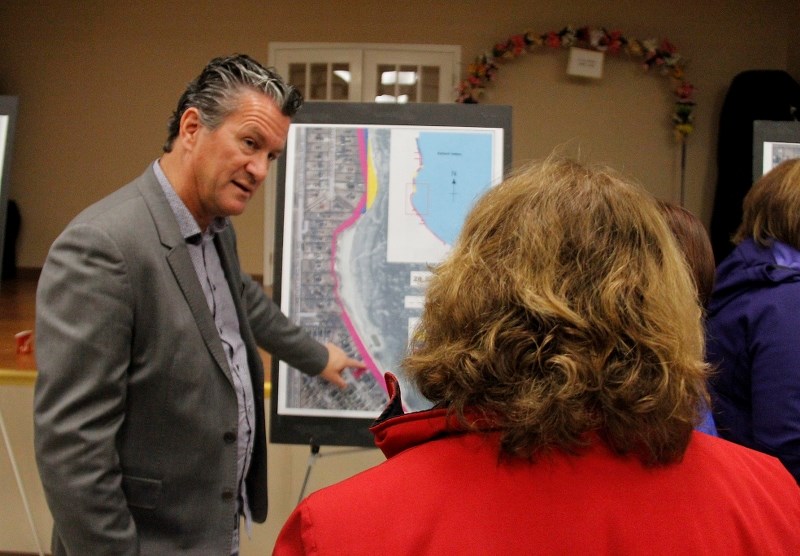Lakeshore property owners have learned a valuable lesson from the Alberta Government; they are encroaching on public land, whether they realize it or not.
A letter from James Laird, lands approval team lead for Alberta Environment and Parks, was sent out to property owners along Cold Lake informing them of their discrepancy. The letter was sent out in December 2016, notifying residents they had by May 1 to remove their property from public lands, or they could face a fine of up to $100,000.
As a follow-up to the letter, Laird attended the Cold Lake lakeshore open house on Wednesday, April 26 to answer questions and shed some light on what this means.
The open house included a presentation that emphasized on the difference between Crown lands, municipal reserve, and environmental reserve.
“There are differences; part of the lands are administered by the City of Cold Lake, such as the municipal reserve and the environmental reserve. The provincial government has the mandate of administering the lands that are known as the bed and shore, which is the water mark to the top of the bank,” Laird explained.
This is the area the province is concerned about at this time. For those encroaching on the municipal or environmental reserves, they are off the hook for the time being.
“Council will eventually get into that sandbox of understanding what we want to do, if anything, with our municipal reserves and environmental reserves,” said Mayor Craig Copeland.
City of Cold Lake CAO Kevin Nagoya added, “The environmental reserves don't give the city a lot of flexibility. Legislation is pretty cut and dry in saying that it will be left in its natural state. We wanted to make sure that residents understand that the municipality can't do things in those areas. The municipal reserve allows for a little more flexibility, but there has to be a public component to it.”
The city will eventually look into enforcement on municipal and environmental reserves, but it's not a priority at this time.
Lakeshore property owners who attended the event showed particular concern over whether or not other lakes were being inspected, such as Pigeon Lake or Muriel Lake. They wondered if residents along those lakeshores also received notice about encroaching on Crown lands.
Laird explained that the team works on a complaint basis, and because a resident had submitted a grievance to them about the property on public lands, they were required to investigate.
“We have instances that we have been made aware of where people have been encroaching onto crown lands. We were out doing inspections and we noticed that a lot of people had docks or boat lifts that have been stored on the bed and shore, or have fire pits in developments that are obstructing public access,” he added.
During the summer months, residents living along the lakeshore are permitted to leave their docks and lifts on Crown lands, but they must be removed during the colder months when they're not in use.
“They would have learned to recognize that public lands are for all of Albertans to enjoy, and that there are specific uses of public lands that are permissible, namely the boat docks and lifts,” continued Laird.
A row of maps highlighted the municipal reserves, environmental reserves, and crown lands. This helped the public better understand whether or not their property was one in question.
“It‘s not an easy thing that our department is mandated to deal with, but having this opportunity is good because you can get a lot of people in the same room who have similar interests and questions and hopefully get the word out,” Laird said.
Moving forward, Environment Alberta will monitor the issue, and will touch base in a few months. The deadline of May 1 is important, Laird said, but not everything.
“We are trying to educate and instill some value in everybody that lakes are precious and we should be treating them right. Certain things that we do as property owners may be detrimental to them,” he added.
Should property owners fail to remove their property, they could be fined up to $100,000 based on Alberta legislation.
Laird explained, “Our legislation does provide the department with the ability to lay charges, although, it's not necessarily our preferred choice. We are more wanting to provide the opportunity to educate so people comply voluntarily, and not deal with things through a heavy handed approach.”



